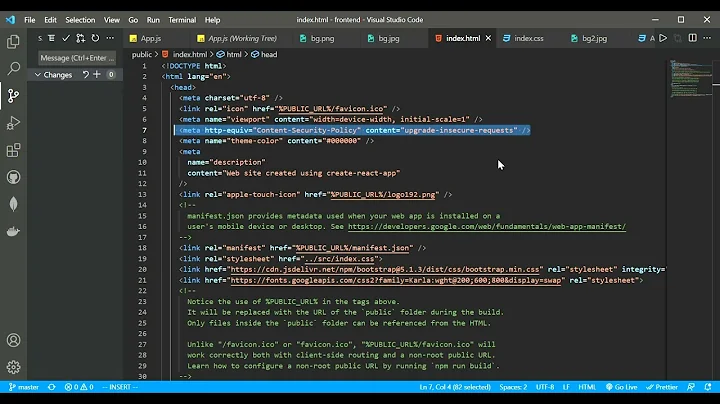HTTP request to an API has been blocked from an HTTPS website
As a work around, I am proxying the web service:
My SSL Hosting (Angular Project + Newly created proxy web service)
AWS (Old Web service + MySql Database)
From angularJS i call newly created proxy (that just uses cURL). This cURL code passes request to AWS server over HTTP.
Related videos on Youtube
Paresh Gami
Updated on September 18, 2022Comments
-
 Paresh Gami over 1 year
Paresh Gami over 1 yearI am facing problem to call web service which is hosted over HTTP and I am calling web service from HTTPS domain.
web service's .htaccess
RewriteEngine On RewriteCond %{REQUEST_FILENAME} !-f RewriteRule ^(.*)$ %{ENV:BASE}index.php [QSA,L]I got following error in console when I am trying to calling web.
angular.min.js:93 Mixed Content: The page at
https://www.<my-domain.com>/#/was loaded over HTTPS, but requested an insecure XMLHttpRequest endpointhttp://<api url goes here>. This request has been blocked; the content must be served over HTTPS.Note
Web service is hosted in AWS server which is HTTP only and my website is hosted to other hosting provider.
-
 Admin about 8 yearsWell, it's fairly simple. You aren't allowed to load http in an https website. If that hoster cant go implement SSL, go to another hoster :)
Admin about 8 yearsWell, it's fairly simple. You aren't allowed to load http in an https website. If that hoster cant go implement SSL, go to another hoster :) -
 Admin about 8 yearsBecause all internal and external resources such as JavaScripts, Images, CSS etc MUST to be loaded over HTTPS...
Admin about 8 yearsBecause all internal and external resources such as JavaScripts, Images, CSS etc MUST to be loaded over HTTPS... -
 Admin about 8 yearsit is not possible using htaccess or from anything?
Admin about 8 yearsit is not possible using htaccess or from anything? -
 Admin about 8 yearsAbsolutely not possible... your site is either SSL or its not... everything must be HTTPS in order for SSL to be secure.
Admin about 8 yearsAbsolutely not possible... your site is either SSL or its not... everything must be HTTPS in order for SSL to be secure.
-
-
 Stephen Ostermiller about 8 yearsWhile this makes it work, it introduces a security hole. The API data can be modified in transit over HTTP. Your website will then display hacked data. This is known as a "mixed content vulnerability". Here is an article that explains why this type of vulnerability is serious: whitehatsec.com/blog/why-is-passive-mixed-content-so-serious
Stephen Ostermiller about 8 yearsWhile this makes it work, it introduces a security hole. The API data can be modified in transit over HTTP. Your website will then display hacked data. This is known as a "mixed content vulnerability". Here is an article that explains why this type of vulnerability is serious: whitehatsec.com/blog/why-is-passive-mixed-content-so-serious



![CORS Error & Solutions In A Nutshell [Cross Origin Resource Sharing]](https://i.ytimg.com/vi/gPzMRoPDrFk/hq720.jpg?sqp=-oaymwEcCNAFEJQDSFXyq4qpAw4IARUAAIhCGAFwAcABBg==&rs=AOn4CLCL9ZbwLoTEYnPYQFHRmL1ZdqSvVg)



